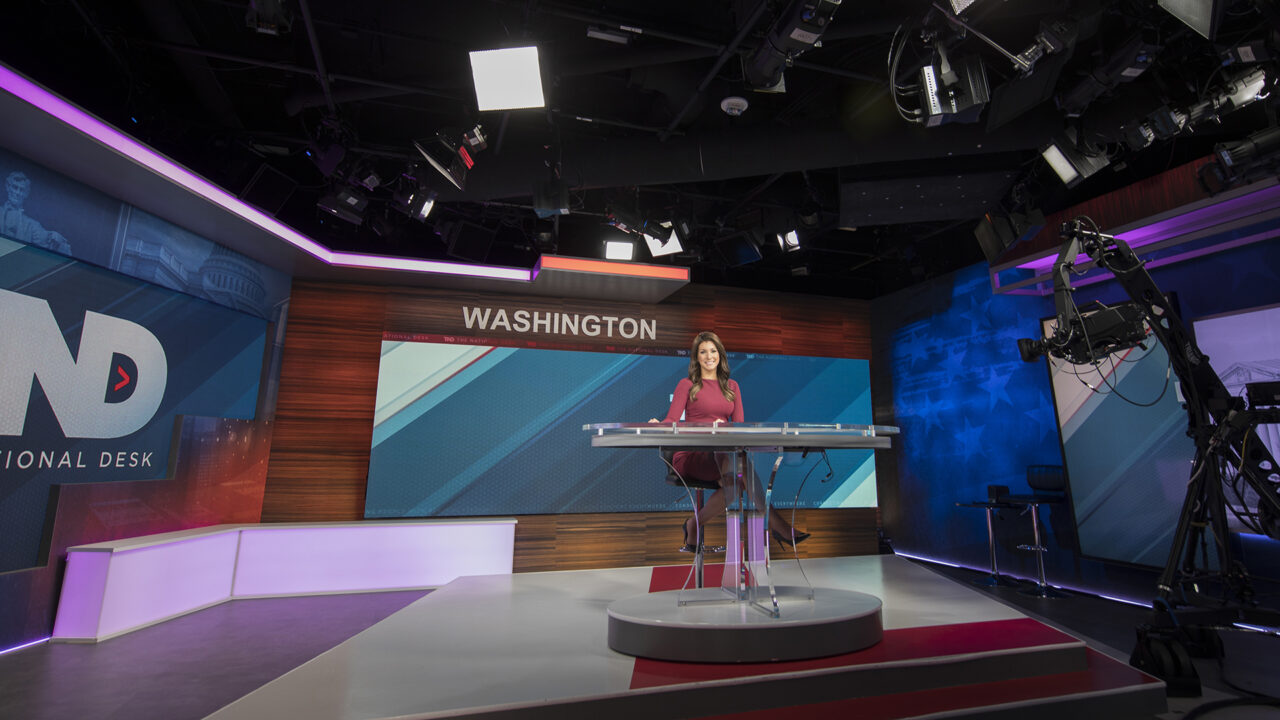“It’s the most thoughtful approach to journalism that I’ve seen in a really long time,” says Meagan O’Halloran. “It seems like the perfect hybrid: national news with a local feel.”
O’Halloran has just moved into a new office in Washington, D.C. This is her first week on the job as anchor of an innovative news program that Sinclair is launching on September 27 — a nightly version of its nationwide morning show The National Desk (TND), which premiered in January. O’Halloran left a successful five-year run as morning anchor at Nexstar’s KDVR (Fox31) in Denver to join Sinclair and a fast-growing trend: local station groups creating national programs and even whole channels to amortize resources, populate new platforms, and replace generic syndicated fare with original content.

Sinclair pumps out the morning version of The National Desk from its Washington station, WJLA, for five hours, from 6 a.m. to 11 a.m. Eastern Time. Stations can take as much or little of it as they like. The main broadcast outlet is Sinclair’s CW and MY stations, many of which don’t have robust news departments. “We think that being able to create original programming, especially news programming, is a real opportunity for us on a lot of these stations,” says Scott Livingston, the group’s SVP of news.
The new evening edition will air from 10 p.m. to midnight Eastern — one feed for all time zones — and it (or chunks of it — again, the stations get to decide) will appear on 64 stations in 60 markets. But TND also streams on all Sinclair station websites as well as its OTT platform, Stirr, which we wrote about here. The National Desk represents a substantial investment: about 60 people in total work on the two editions. A standalone TND website and app are due next month.
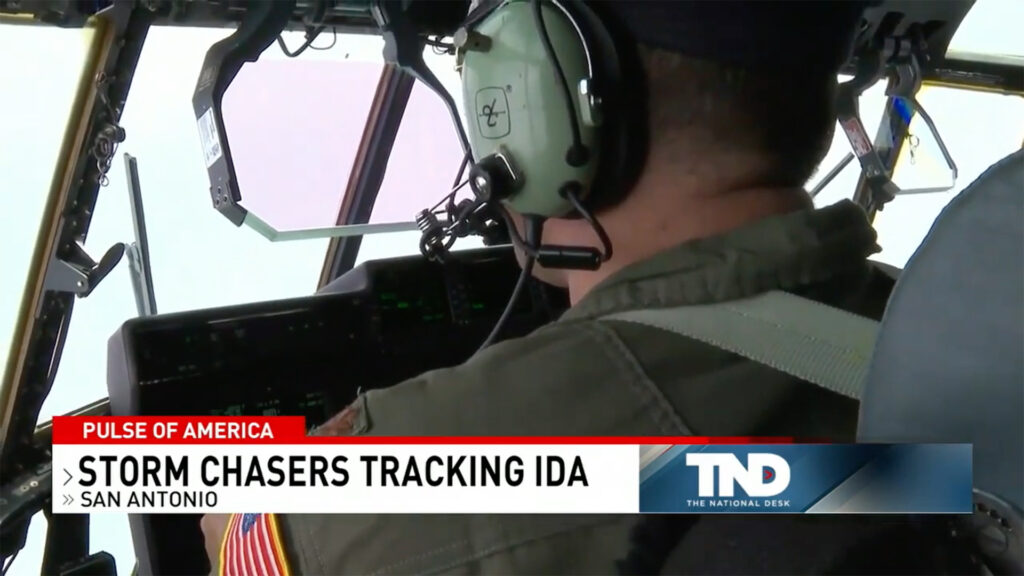
“It’s a newscast of discovery, using all the resources across Sinclair,” says Livingston, who talks proudly of the company’s “4,000 journalists.” “When you watch The National Desk, we are taking you along this journey as news unfolds,” he says. “We can discover important things and storylines together.” If that sounds different from the usual formula of a conventional newscast, it’s supposed to.
“If the newscast is live, and truly digging while it’s on the air, I think it’s a new concept that doesn’t exist right now,” says TND director of content Mike Garber, who joined the team in June after more than four years as news director at Sinclair’s Salt Lake City station. Garber uses the somewhat oxymoronic term “real time investigative” to describe the new approach: “What we want to do that’s different than anybody else is each night take on a controversial topic, the big story of the day, but do a real time investigation into it that night.”
In order to accomplish that ambitious goal, Livingston, Garber and nightside executive producer Ryan Minnaugh are counting on an innovative feature: a three-person team, internally dubbed “the truth squad” while management decides on its real name, that digs into one big story each day. The “squad” is assigned to come up with relevant context and hard data and then share it online as well as live on the air with O’Halloran, who reacts on the fly. “It’s not going to be a fancy, pre-packaged three-minute or five minute story,” Livingston says. “It’s a conversation. It’s pulling up the documents that support what we’re seeing, what the trend is, and then taking all that content and posting it on our website. So folks can continue to do their own discovery, if you will, based on all the information that we’ve gathered throughout the day.”
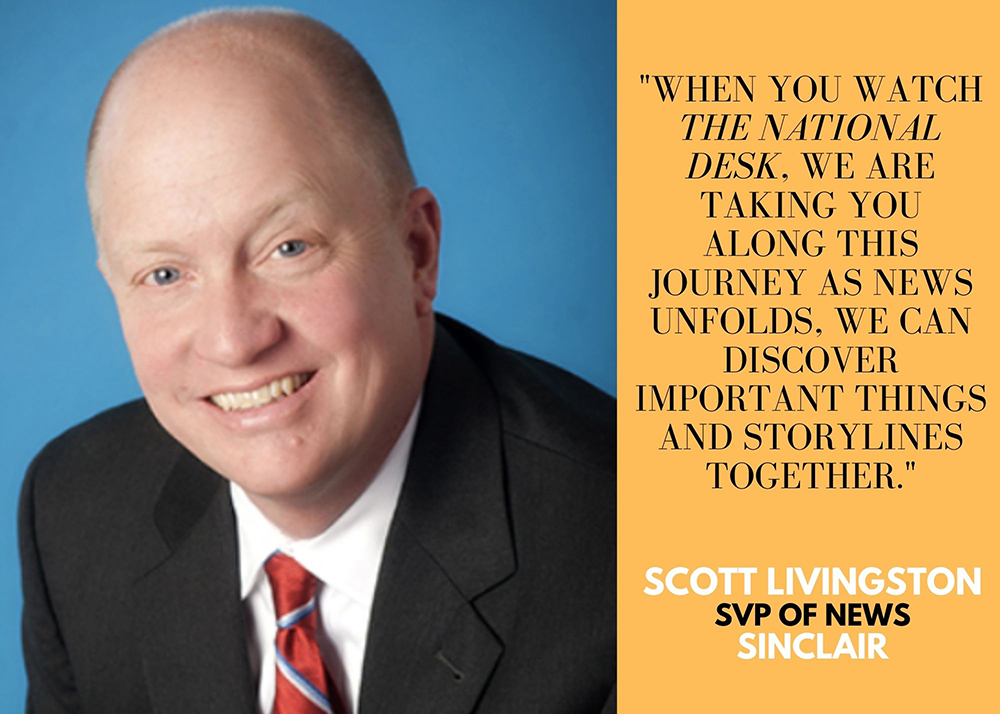
Livingston sees this as an important exercise in transparency at a time when partisan divides continue to erode trust in news organizations, as the Pew Research Center reported this week. “There are now a lot of questions about ‘How do I know we’re getting to the truth? How do I know that’s accurate?’ Well, we’re going to take you along for the ride,” Livingston says. “I think viewers want to see how the sausage is made. These are all the things that we typically do in a newsroom, but we just don’t showcase it. So this is the process of getting to the truth.”
Some readers may find it ironic that Sinclair, which has faced searing blowback for forcing political opinion into local newscasts, is presenting its new program as a needed alternative to the opinionated scrum of prime time cable news. “We believe there’s a gap there that we can close by providing a distinctive and unique news product,” says Livington. The news release announcing O’Halloran’s selection promises a “comprehensive, commentary-free look at the most impactful national news and regional stories of the day.” “It’s going to be fact based; it’s not going to be opinion,” Garber says. “What are the facts telling you?” Adds O’Halloran: “I hope that [viewers] would watch and say, ‘I like them. I trust them. And I’m getting a product that I’m not getting on cable news.’”

In addition to the nightly exploration of a hot topic, TND is borrowing several features from its morning progenitor that it hopes will also help it stand out: a “live desk anchor,” Eugene Ramirez, reporting on unfolding events like his morning counterpart Cayle Thompson; a national correspondent, Ryan Smith, reporting on major stories like his morning counterpart Angela Brown; and “Pulse of America,” a collection of local stories of national interest culled from Sinclair stations. There’s also the ability to call on Sinclair’s army of local reporters when relevant news breaks on their turf.
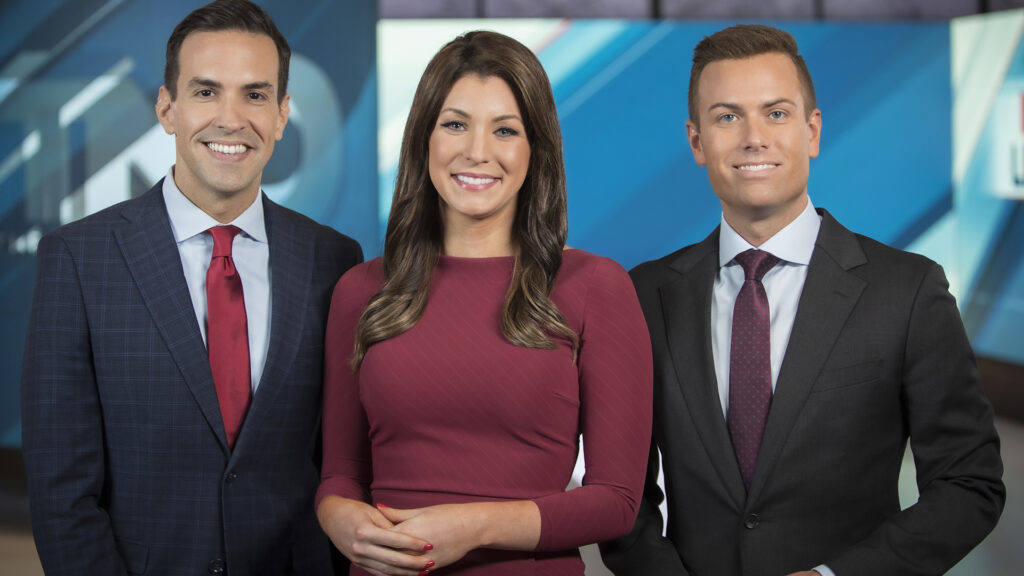
Livingston, Garber and O’Halloran all stress the importance of going deeper than the headlines, which sounds like a cliché until you actually try to do it. “That’s part of the conversation that we have every day,” O’Halloran says. “What are the most important stories? And how do we take that a step beyond the local news headlines? How do we dig into that with the truth squad?” “People understand that we’re going to a local reporter who can provide context: not just the ‘what,’ but the ‘so what,’” Livingston says. “I get the ‘what’ all day long on other platforms, on my phone, so if I don’t provide the ‘so what,’ we’re really in trouble.”
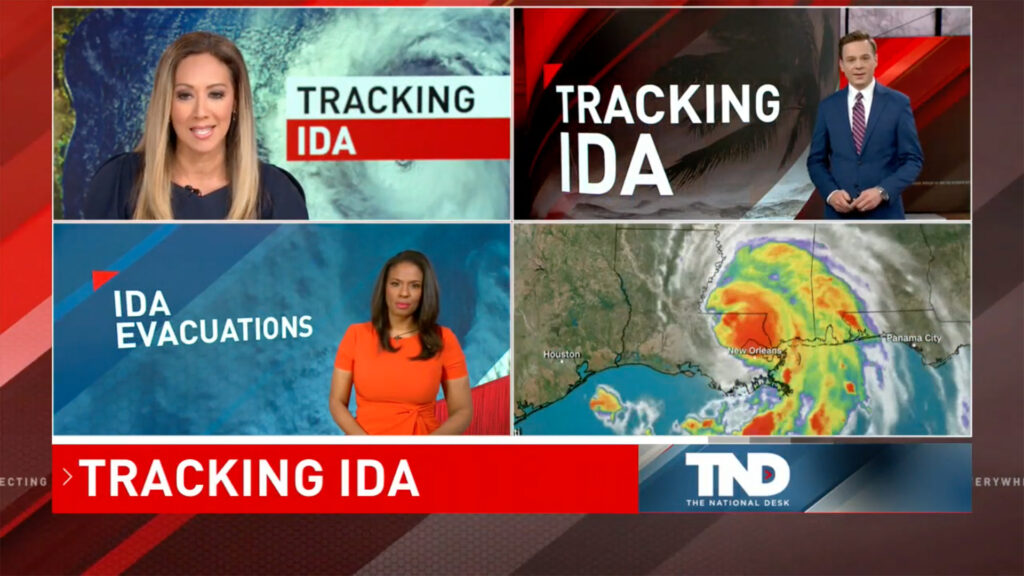
As I mentioned, station ownership groups creating national programs and channels for both broadcast and digital platforms is all the rage. We’ve reported on ABC’s Localish; NBC’s LX; Scripps’s Newsy; Gray’s Full Court Press with Greta van Susteren; and TEGNA’s Verify, among others. The most obvious competitor to Sinclair’s efforts is Nexstar, which, despite well-chronicled growing pains, is adding two high-profile new programs to its cable news channel, NewsNation, on the same day that The National Desk makes its nightly debut.
Does Sinclair have plans for a news channel of its own? You can be pretty sure that if the second edition of TND succeeds, more hours of news will follow. “We’re going to crawl, walk, run, but expansion’s got to be on people’s minds,” says Garber. “I think we recognize that if we’re going to be relevant in all of our channels and all of our markets and all our platforms, we need to focus on news and sports,” says Livingston. “And that’s local news, national news, regional sports, national sports. So I think there’s real opportunity there. And I think we’ll always look for opportunities to expand our local and national brands.”
I’ll take that as a yes. As for O’Halloran, she’s just eager to get started. “We really have a huge hand in making this what we want to make it,” she says. “We’re really excited about it. I’m really excited to see where we go from here.”
Get the Lab Report: The most important stories delivered to your inbox
